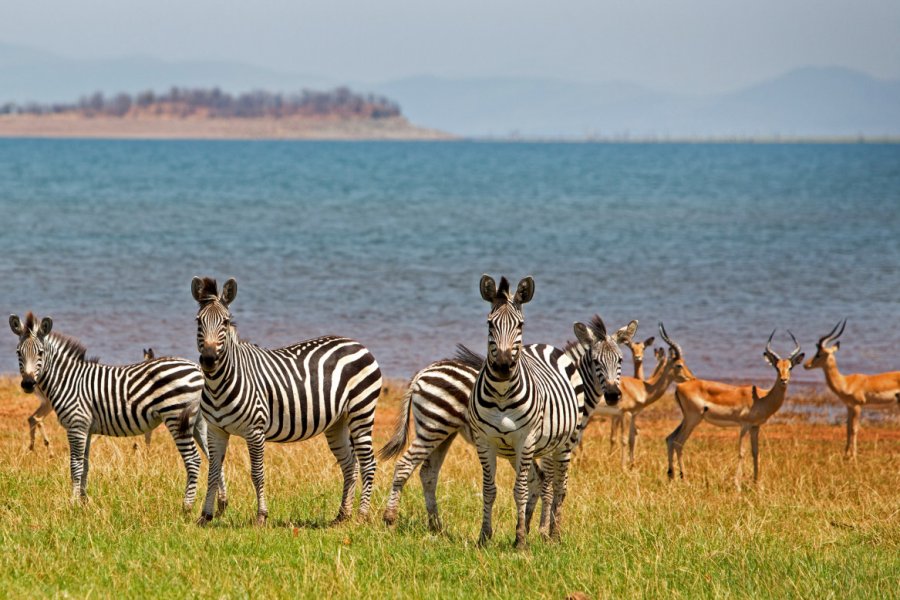Travel Guide Lake Kariba
Find an accommodation
Advertising
This is the result of a crazy project that monopolized the energies of thousands of workers and brought about profound upheavals in the whole country (and particularly in the Zambezi Valley). Lake Kariba is a must-see on any tourist circuit in Zimbabwe. This is the result of the fact that the concept of the "city" is not only a "city of the people", but also a "city of the people", a "city of the people". This is the reason why the city of Kariba is so important for the development of the city and its inhabitants, as well as for the development of the city itself. This is the main reason why the Creative City concept is so important for the development of the Creative City concept, and why it is so important for the development of the Creative City concept as a whole. H. S. Kergwin, a government official, was sent to the area after many travel reports and found it to be an ideal place to build a dam, the water of which would be used for irrigation. The idea was abandoned, however, only to be revived in 1941 by J. L. S. Jeffares, following a study to determine the hydroelectric potential of such a dam. The results were excellent, but it was not until 13 years later that the project really took off. In 1954, a town (now Kariba) was built to house more than 10,000 workers, and construction of the dam began shortly afterwards. An Italian company, Impresit, took charge of the project, and faced the wrath of the indigenous tribes and the angry "river god" in succession. Panicked by the upheavals that the alteration of the course of the Zambezi would necessarily entail, the Tonga (a people settled in the valley) mobilized to demand, in vain, that the project be abandoned. They argued that the changes resulting from the formation of a lake in the Zambezi Valley would first destroy much of the regional flora and fauna, then force the local people to change their lifestyle, and finally raise the wrath of Nyaminyami, the god of the river. In March 1957, the Zambezi River suddenly rose 30 meters and 13 million liters of water rushed into the gorge, destroying the bridge and the foundation of the formwork. In February 1953, a platform collapsed and seventeen workers were engulfed in drying cement. In addition to these tragedies, the weather conditions were extremely difficult: for several summers in a row, the temperatures were particularly high, forcing the workers to work more slowly and to fight against sunstroke. In all, more than eighty people lost their lives during the four years it took to build the dam. The dam was completed in 1959, at which time the Zambezi River was dammed to form the lake, which did not reach its present size until September 1963.This is a real jewel in a landlocked and relatively arid country, Kariba is the third largest dam lake in Africa (at the time of its formation, it was the largest in the world!). It straddles Zimbabwe and Zambia, spreading its waters over 5,200 square kilometers and stretching 281 kilometers in length and 40 kilometers at its widest point. This is a very popular place for Zimbabweans and foreign tourists who come to vacation here for fishing (the lake is home to more than 40 species of fish including several varieties of bream, as well as tiger fish), sailing (multi-day cruises aboard luxury yachts, sailboats, catamarans or floating homes are possible) and safari. This is because the shores and islands of Kariba are known for their abundance of wildlife and their extremely wild plains. This is because of the fact that it is possible to get a better understanding of the concept of the "Creative City" and the "Creative Economy" in the context of the Creative City concept. This is the reason why it is so important to have a good understanding of the concept of the city and its surroundings.The area around Lake Kariba is located at a very low altitude and enjoys much higher temperatures than the rest of the country. As such, it is not recommended to visit during the hot season, from November to February. If the mercury often exceeds 40°C, the ambient atmosphere is very humid and showers are rather numerous. The latter are sometimes accompanied by sudden and violent storms. Cruise lovers will therefore choose the winter months (June, July, August), which are spared from rain and mosquitoes. This is a good opportunity to get to know the local people and their culture, and to learn more about the local culture and culture of the area.Lake Kariba is 220 km long and can be accessed with varying degrees of difficulty depending on the destination. Only two towns are accessible by public transport, Kariba Town in the east and Binga in the west. Other destinations can be reached by car (most of them require a solid 4 x 4) and still others are only accessible by boat.
What to visit Lake Kariba?
Suggested addresses Lake Kariba
Weather at the moment
Advertising
Organize your trip with our partners Lake Kariba
Transportation
Book your plane tickets
Car Rental
Boat rental
Accommodation & stays
Find a hotel
Holiday rental
Find your campsite
Tailor-made trip
Immersion travel
Services / On site
Activities & visits
Find a doctor
Find unique Stay Offers with our Partners
Pictures and images Lake Kariba
Other destinations nearby Lake Kariba
5 km away






